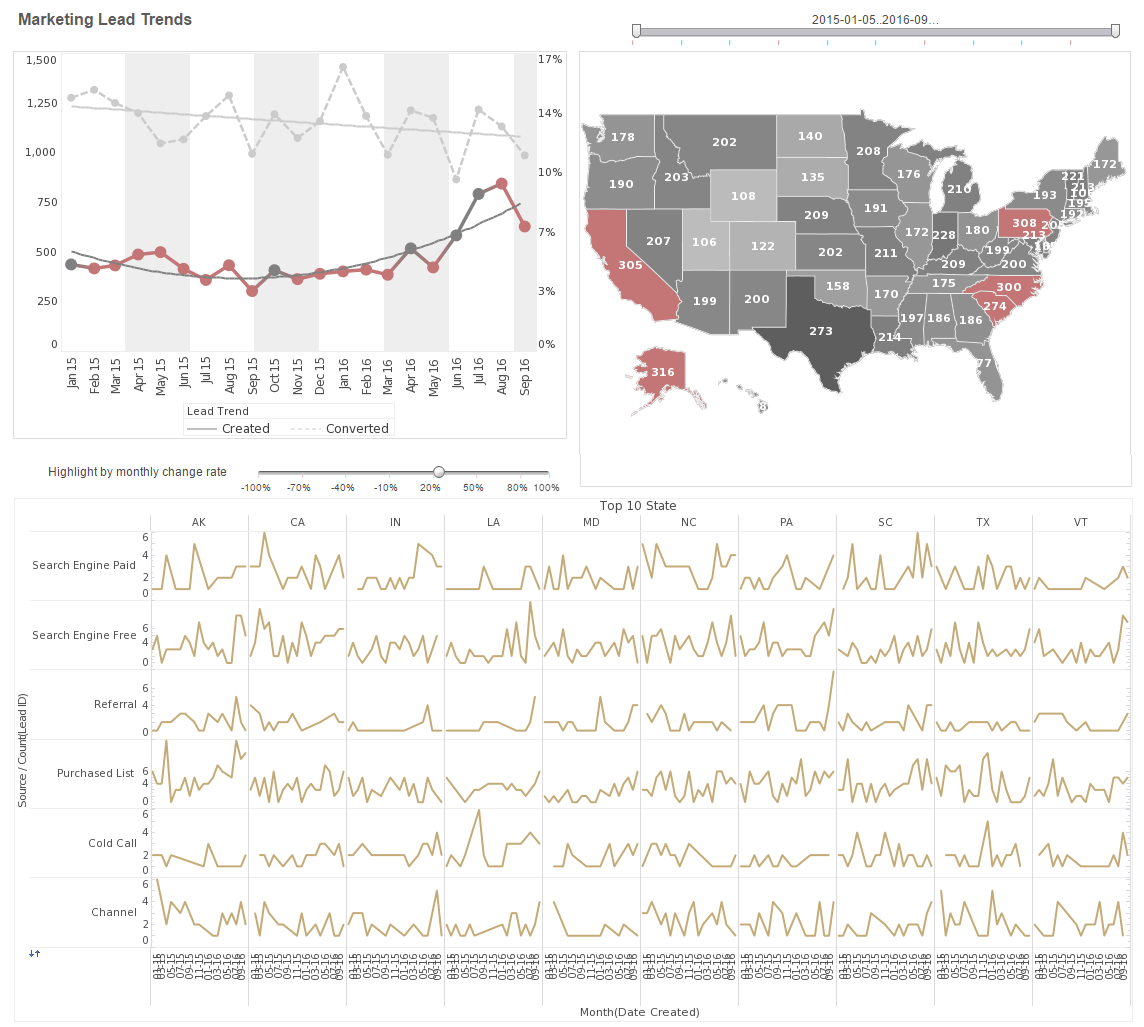InetSoft Product Information: Dashboard Software Image
InetSoft's applications include dashboard software text packages that allow you to create highly polished and detailed reports on the fly. View the example below to learn more about the Style Intelligence solution.
An Image element displays an image file (gif, jpg, png) on the Viewsheet. To add an Image element to a Viewsheet, follow the steps below:
- Drag an Image element from the Component tree onto the Viewsheet grid. Use the handles to move and resize the element.
- Right-click the image element, and select �Properties�. This opens the �Image Properties� dialog box. Select the General tab.
- To upload a local image file, click the ‘Upload’ button at the bottom of the dialog box, and choose the file. The uploaded file is now listed under the ‘Uploaded’ folder. Uploaded image files are stored in the asset.dat file together with the Viewsheet.
- Select the desired image from the �Uploaded� folder, and click �OK�. The image is added to the Viewsheet. By default, the image appears at its full size. To scale the image to the Image container, select �Scale Image� from the Advanced tab.
To specify an image that already exists on the server (in a directory on the classpath), enter the resource path (e.g. �/library/image.gif�) as an expression in the �Dynamic Image Selection� field, under the Advanced tab.
 |
View a 2-minute demonstration of InetSoft's easy, agile, and robust BI software. |
InetSoft Viewpoint
"The open standards aspect is very important to us since it allows our customers to integrate our technology more easily and leverage assets they already have, in terms of hardware and software and IT skills. So based on this BI platform, our software delivers a host of front-end BI tools including visualization tools, enterprise reporting, monitoring dashboards, and analysis. Those functions were based on a very powerful patent-pending technology we call Data Block.
This Data Block technology is really made up of a back-end data mashup engine and a caching middle layer. There is a front-end we call the worksheet, which is a Web-based, spreadsheet-like user interface that a power user can easily use to combine and transform data blocks. The data blocks are typically started at the atomic data block level. That is typically created by an IT or a BI specialist. They choose these data blocks and performance tune those data blocks.
Then the power users can use those building blocks to build more complex, but more useful structures for answering the questions they have on hand. And all the data blocks you build, in turn become building blocks themselves. You can build on this architecture, building very sophisticated structures which you can use to answer a wide range of unanticipatible questions. " - Luke Liang, CEO, InetSoft
| Previous: Dashboard Software Text |
